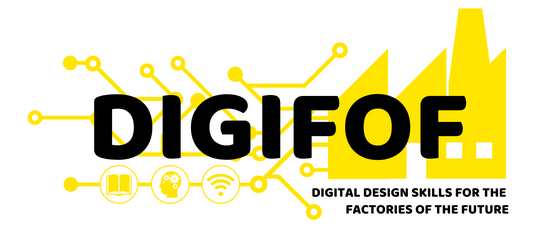Following the NEMO Summer School Series, the NEMO Day aims to provide participants insight into the EU project DigiFoF, results achieved, and further development activities within this project and the OMiLAB network. Moreover, the NEMO Day will give participants an idea of the two-week event, namely the NEMO Summer School, that usually takes place at the end of July at the University of Vienna.
The NEMO Summer School Series focuses on the design and implementation of Enterprise Digital Twins and Ecosystems based on conceptual modelling methods. NEMO provides a vertical overview across different application domains as preparation for all dimensions of digitization.
The NEMO Day - May 2021 is the third edition of the NEMO Day event series organized by the DigiFoF project to elevate student's expertise in design aspects of the factory of the future and gain insights on the applicability of developed design artifacts, methods, and tools. Participants will have the chance to interact with experts in the field, provide their reflection as an evaluation, and are awarded a learning badge.
Agenda:
[9-9:15AM] Welcome and introduction
Presenter: Iulia Vaidian, MSc. , University of Vienna, Austria/OMiLAB NPO, Berlin, Germany
Abstract. Welcome of participants, introduction of the agenda, organisational issues
[9:15-9:30AM] Introduction DIGIFOF project
Presenter: Prof. Dr. Adrian Florea , Lucian Blaga University of Sibiu, Romania
Abstract. Introduction of the project, its goals, objectives and latest developments and publications by the project partners.
[9:30-10AM] Ontology-aided Enterprise Modelling for Human and Machine Interpretation
Presenter: Prof. Dr. Knut Hinkelmann , OMiLAB NPO, Germany/University of Applied Sciences and Arts Northwestern, Switzerland
Abstract. The continuous alignment of business and IT in a rapidly changing environment is a grand challenge for today's enterprises. Decision-makers use models to understand and analyze a situation, to compare alternatives, and to find solutions. While humans prefer graphical or textual models, semantic annotation makes the knowledge in models machine-interpretable. The approach has been applied in the CloudSocket project for the selection of cloud services to achieve Business Process as a Service. This presentation also describes a meta-modelling approach, which combines human-interpretable graphical enterprise architecture models with machine-interpretable enterprise ontologies. A metamodel which is represented as a formal ontology determines the semantics of the modeling language. Every time a new modelling element is created during modelling, an instance for the corresponding class is created in the ontology. Thus, models for humans and machines are based on the same internal representation.
[10-10:30AM] Design and engineering of product service solutions
Presenter: Dr. Fabiana Pirola , University of Bergamo, Italy
Abstract. Servitization is a global trend in manufacturing companies that requires a challenging and complex transformation. The design and engineering of product-service solution is becoming more and more relevant to successfully manage this transition. To this purpose, the SEEM (SErvice Engineering Methodology) methodology is presented and an application in a case study is showed.
[10:30-11AM] Automation of assembly lines assited by a robotic arm and a mobile robot
Presenter: Octavian-Isaia Baltes , Lucian Blaga University of Sibiu, Romania
Abstract. The project proposes to simulate real life scenarios that occur daily inside the production line of a company. It was built up using the tools (Bee-Up) and robots (dobot and mbot) provided by OMiLAB and we chose this kind of scenario because we found it very suitable for the type and capabilities of the robots. The project is in its initial state and will be improved with more complex scenarios.
[11-11:30AM] Collaborative robotics in action
Presenter: Prof. Dr. Juha Röning , University of Oulu, Finland
Abstract. Collaborative robots (cobots) are becoming popular in several applications. Compared to industrial arm robots cobots have safety features and limitations that allow them to operate alongside humans. We will present the advantages and disadvantages of cobots and some use cases where collaborative features are useful and some cases where the collaborative features don’t bring increased value.
[11:30-12PM]
Presenter: DigiFoF Project team
Abstract. Feedback session and Q&A to presenters.
More information and documentation: https://www.omilab.org/activities/events/nemoday2021_may/
